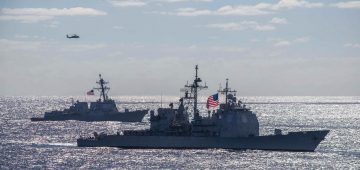- ENTIRE GERMAN U-BOAT FORCE OUT OF ACTION
- TYPE 45 RECTIFICATION
- USN CAN HIT HARDER FROM FURTHER AWAY
ENTIRE GERMAN U-BOAT FORCE OUT OF ACTION
Germany’s flotilla of six Type 212A submarines was reportedly all recently out of action after the only operational boat, U-35, suffered an accident. She was apparently conducting a diving manoeuvre off the coast of Norway that damaged a rudder blade.
The submarine – first of the improved variant of the class optimised for global deployments – was preparing to join a NATO exercise. The extent of the damage and how long the submarine would remain out of service was unknown. Three Type 212As are already undergoing overhaul: U-31 (until this month, December); U-33 (until February) and U-36 (May). The remaining two (U-32 and U-34) are waiting for space to become available at the TKMS yard in order to start refit programmes. It is hoped three to four of the submarines will be operational by the middle of 2018.
Bottlenecks in procuring spares to be used in the overhaul of the submarines are reportedly a major cause of low availability. It is claimed the German Navy no longer keeps spares in reserve due to cost-cutting measures.
TYPE 45 RECTIFICATION
Details of a contract due to be awarded in 2018 have revealed the cost of fixing the propulsion problems afflicting the Royal Navy’s Type 45 destroyers.

Responding to a question put in the House of Commons the Defence Procurement Minister, Harriett Baldwin, stated present plans anticipated contract award for the so called ‘Power Improvement Project’ to happen in early 2018.
The Type 45 has suffered from potential total electrical failure, leading to near shutdown of the entire ship. Engine manufacturer Rolls Royce say this is because the design specifications were faulty, leading to the intercooler being built to specifications that have caused problems. Consequently, under a staggered refit programme, the destroyers’ hulls will be cut open to allow for installation of additional diesel generators (and keep them on patrol).
According to government figures, Project Napier, as the overall rectification programme is called, will cost £280 million. The six Type 45s are highly capable vessels but the power generation issues have been severely embarrassing for the UK and have badly affected the RN’s ability to deploy them.
USN CAN HIT HARDER FROM FURTHER AWAY
The US Navy’s Joint Standoff Weapon (JSOW) C-1 is officially ready for full operational capability, offering the USN its first air to ground network enabled weapon (courtesy of a two way Link 16 data link).
It can attack moving maritime or stationary land targets. The JSOW C-1 will now enter full service. Its capabilities are much sought after due to its flexible targeting capabilities. Initial operational capability was reached in 2016 with JSOW C-1 tested in fleet-wide exercises involving increasingly complex scenarios. Live rounds were used during a Valiant Shield 2016 SINKEX where the JSOW C-1 sank the former Oliver Hazard Perry Class frigate Rentz. The JSOW C-1 will deliver a wider range of improved lethal capabilities for the US Navy’s Hornet and Super Hornet strike jets.

-
For more naval news buy WARSHIPS IFR magazine.





Comments
Sorry, comments are closed for this item